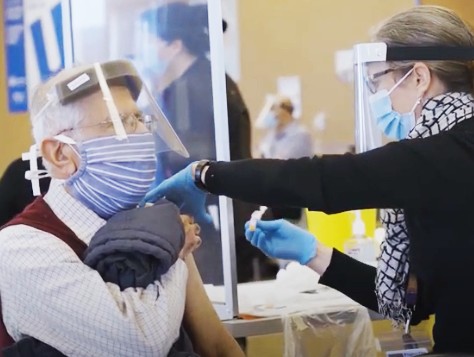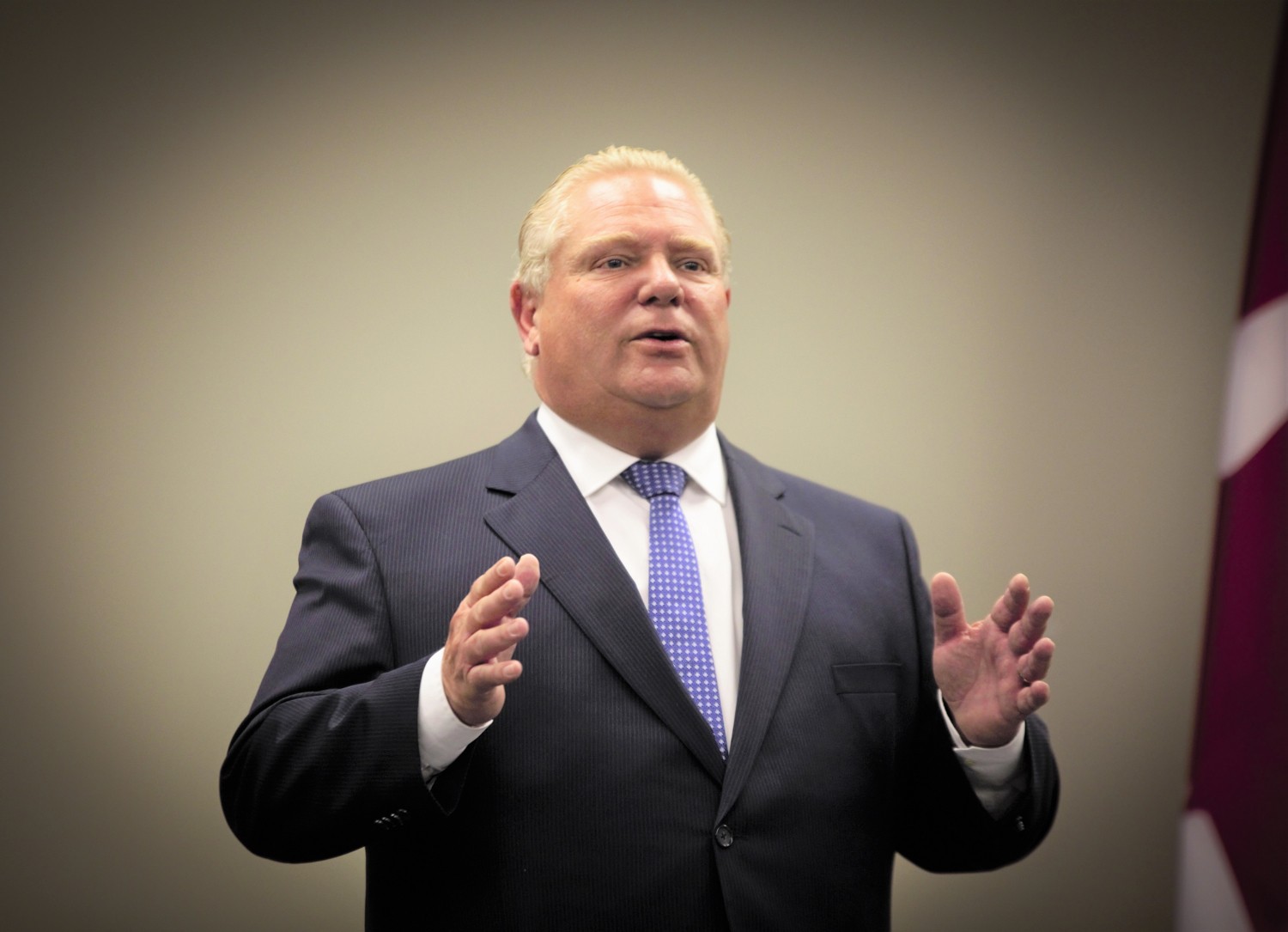
Ontario’s vaccination plan isn’t working for Peel
For the past year, Peel’s residents have been battered by COVID-19 and the punishment continues as the Province’s vaccine rollout neglects Ontario’s hardest hit region.
By almost every public health metric, Peel has been the worst in the province for much of the pandemic. Cases per 100,000: Peel overshadows Toronto by 28 percent for figures from the beginning of the pandemic until March 11. Test positivity: Peel’s second wave peaked at 14.1 percent (January 7) compared to 10.2 percent (January 5) in Toronto.
Since January 15, Peel has surpassed Toronto in the number of new COVID-19 cases.
The region was late exiting the Province’s staged restrictions in the summer due to high rates of infection that hit racialized communities and frontline workers hardest. The brief summer afforded for local businesses, starting at the end of July, was marred by the threat of renewed lockdown measures.
As Ontario’s second wave crested ominously on the horizon, Peel was among the first areas to be swept away. Alongside Toronto, businesses and residents in Brampton, Caledon and Mississauga have been under Ontario’s longest lockdown, stretching back to November 2020.
The approval of multiple vaccines beginning in December, little more than a fantasy during the humid summer months, finally offered hope. As Ontario’s hardest hit region, Peel was bound to be front of the line, residents presumed.
The Province didn’t see it that way.
Since vaccines began arriving in dribs and drabs, Queen’s Park has parachuted them across Ontario using a constantly changing plan. Its confused decision making has left Peel behind, again.
Totals released by Peel Public Health and the Province show doses are already lagging in the region. Together, Brampton, Caledon and Mississauga account for precisely 10.3 percent of Ontario’s population, according to the 2016 census, but only 7.4 percent of Ontario’s total vaccine doses have entered arms in Peel.
Data, updated every Friday in Peel, show that on March 12 Peel had administered just 78,251 of Ontario’s 1,062,910 doses.

It remains unclear why the Region of Peel continues to receive inadequate resources from Premier Doug Ford and the PC government.
Last week, councillors in Peel voted unanimously to ask the Province to reshuffle its vaccination plan to prioritize essential workers in the region. Figures and recent decisions show the current framework doesn’t put Peel first in the way it should.
On March 11, several local PC MPPs tweeted a pre-prepared graphic celebrating one million doses of COVID-19 vaccine being administered around the province. They made no reference to the fraction arriving in Peel where infection data would suggest they are needed most.
“Your #Provincial MPPs are working hard to keep each & every Ontarian safe & healthy,” Mississauga Erin-Mills MPP Sheref Sabawy tweeted.
On-the-fly decisions around two recent pilot programs show Peel is not on Premier Doug Ford’s priority list. Not prioritizing the region for extensive early vaccinations would suggest that Ford and his cabinet table have learnt little from the past year.
A recent contribution of 194,500 doses of the AstraZeneca vaccine to Ontario from Ottawa was earmarked for work-aged residents between 60 and 64-years-old. An original pilot to administer all of the doses through pharmacies did not include Peel Region, sending them instead to the Kingston area, Toronto and Windsor-Essex.
At the very last second, the Province redirected 29,500 doses to primary care physicians in six separate public health units. Peel was just one of them, hosting 8 of the 40 locations. It is unclear how many doses it has received and Peel Public Health would not tell The Pointer when asked.
Beyond recent political decisions, the broader vaccine distribution framework shows a lack of awareness for the policies that will help Peel get its pandemic under control.
The Province maintains a cascading list of priorities for Phase 2 of its vaccine rollout, due to begin by April. The framework relies heavily on age and suggests those who are 80 and older should receive their first dose in March, 75 plus in April, descending through the age groups to have all willing over 65s vaccinated with their first dose before the end of May.
In the Region of Peel, where the 2016 census shows the median age as 38-years-old, senior populations fall below its overall population share. Only 6.2 percent of Ontario’s 85 and older population lives in Peel, while just 7.2 percent of its 80 to 84-years-olds are Peel residents. Overall, 7.9 percent of Ontario’s 65 years and older population lives in the Region of Peel, which makes up 10.3 percent of the province’s total number of residents.
The figures behind the framework are fairly opaque, making it difficult for the public to understand the broader plan. When Ontario was preparing to vaccinate over-80s and announced an online portal to book appointments, many health units — including Peel — jumped ahead and started working on their own. There are now separate online booking systems for pharmacies, local health units and Ontario as a whole.
The age-first approach protects Ontario’s oldest and most medically vulnerable populations from serious illness or death, but proves less effective at reducing the spread of COVID-19 taking place in Peel, particularly in workplaces.
The Province’s rollout strategy says, from April, over 75s, those with specific health conditions, people living in congregate settings and 13 hotspots (putting 38 percent of all health units in the same category as Peel) will all receive vaccinations. Numbers are not attached to the plan and a spokesperson for the Ministry of Health explained, “populations will be vaccinated in parallel by the public health units, based on available supply and type of vaccines.”
The Province's proposed vaccination schedule
“Public health units and local health care partners will be responsible for sub-prioritizing within the identified priority populations in line with Ontario’s ethical framework or COVID-19 vaccine distribution and priority population risk matrix,” the provincial spokesperson added.
Peel Public Health’s vaccine plan lists people aged 50 to 79, adults with chronic conditions and essential workers among its Phase 2 priorities between April and July. Details about how these priorities will play out are unavailable. “Work continues on population prioritization, in accordance with guidelines from the Province,” a spokesperson for the Region of Peel told The Pointer.
Concerned about the Province’s vaccine plan, Peel councillors voted unanimously Thursday to ask the government to put frontline workers in warehouse, logistics and processing jobs at the top of their list.
The motion, brought by Mississauga Ward 5 Councillor Carolyn Parrish, resolves that the Region “request the Ontario Government prioritize expedited vaccination of all those Peel residents employed under conditions that make their places of work conductive to the spread of COVID-19 and that vaccinations take place for vulnerable employees including those working in warehouses, manufacturing facilities, packaging and distribution centre”.
“The motion from council will be carefully reviewed by our clinic planning and operations groups,” Peel Public Health said. The Province acknowledged but did not respond to a request for comment.
If more evidence of Peel’s unique situation was necessary, Friday saw a processing facility with 5,000 employees forced to close. Concerned by workplace cases, Peel Public Health’s medical officer of health, Dr. Lawrence Loh, ordered an entire Amazon facility in Brampton shutdown.
Dr. Loh told all workers at the fulfilment centre to self-isolate until March 27, unless they have tested positive in the last 90 days and completed their isolation period as directed by public health.
A statement from Peel Public Health was stark: “The current public health investigation has determined that high-risk exposure to COVID-19 for everyone working at Amazon Heritage cannot be ruled out. Over the past few weeks, the rate of COVID-19 infection across Peel has been decreasing while the rate inside this facility has been increasing significantly.”
When vaccine availability eventually ramps up, the order of prioritization may be an issue of the past. Until then, councillors and officials in Peel hope the Province will make decisions that put them first, giving them the tools required to control the spread of COVID-19 more than a year after it first arrived in Peel.
Email: [email protected]
Twitter: @isaaccallan
Tel: 647 561-4879
COVID-19 is impacting all Canadians. At a time when vital public information is needed by everyone, The Pointer has taken down our paywall on all stories relating to the pandemic and those of public interest to ensure every resident of Brampton and Mississauga has access to the facts. For those who are able, we encourage you to consider a subscription. This will help us report on important public interest issues the community needs to know about now more than ever. You can register for a 30-day free trial HERE. Thereafter, The Pointer will charge $10 a month and you can cancel any time right on the website. Thank you.
Submit a correction about this story


